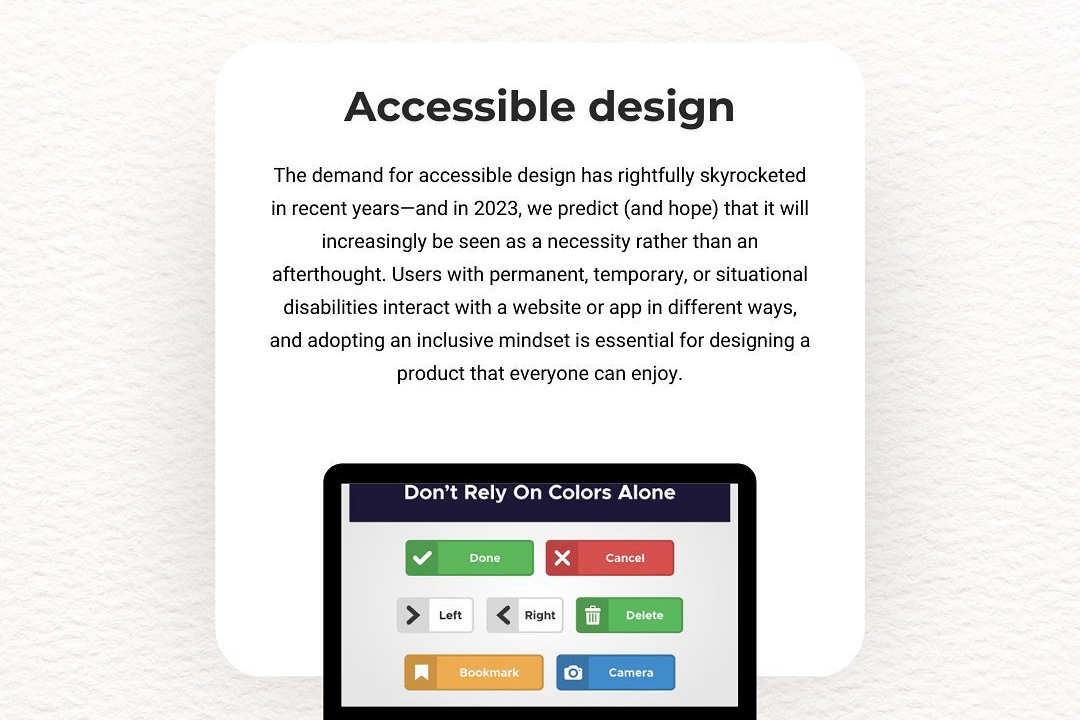Feedback Smiley Icon PHP Program
A feedback smiley icon PHP program is a web-based feature that allows users to provide their feedbac
Feedback Smiley Icon PHP Program
A feedback smiley icon PHP program provides a simple and effective way for users to share their immediate reactions or satisfaction levels by clicking on expressive smiley icons. This user-friendly approach encourages more engagement and instant feedback, making it easier for website owners or businesses to gather valuable insights into customer experiences. By analyzing these responses, companies can identify areas for improvement, enhance user satisfaction, and make data-driven decisions to optimize their services and offerings efficiently.
To Download Our Brochure: https://www.justacademy.co/download-brochure-for-free
Message us for more information: +91 9987184296
A feedback smiley icon PHP program provides a simple and effective way for users to share their immediate reactions or satisfaction levels by clicking on expressive smiley icons. This user friendly approach encourages more engagement and instant feedback, making it easier for website owners or businesses to gather valuable insights into customer experiences. By analyzing these responses, companies can identify areas for improvement, enhance user satisfaction, and make data driven decisions to optimize their services and offerings efficiently.
Course Overview
The ‘Feedback Smiley Icon PHP Program’ course teaches you how to create an interactive feedback system using PHP and smiley icons. You’ll learn to implement user-friendly smiley-based surveys, process responses, and display real-time feedback, enabling quick and engaging user interaction for websites.
Course Description
Learn to create an interactive feedback system using PHP and smiley icons, enabling easy and engaging user responses with real-time data processing and display.
Key Features
1 - Comprehensive Tool Coverage: Provides hands-on training with a range of industry-standard testing tools, including Selenium, JIRA, LoadRunner, and TestRail.
2) Practical Exercises: Features real-world exercises and case studies to apply tools in various testing scenarios.
3) Interactive Learning: Includes interactive sessions with industry experts for personalized feedback and guidance.
4) Detailed Tutorials: Offers extensive tutorials and documentation on tool functionalities and best practices.
5) Advanced Techniques: Covers both fundamental and advanced techniques for using testing tools effectively.
6) Data Visualization: Integrates tools for visualizing test metrics and results, enhancing data interpretation and decision-making.
7) Tool Integration: Teaches how to integrate testing tools into the software development lifecycle for streamlined workflows.
8) Project-Based Learning: Focuses on project-based learning to build practical skills and create a portfolio of completed tasks.
9) Career Support: Provides resources and support for applying learned skills to real-world job scenarios, including resume building and interview preparation.
10) Up-to-Date Content: Ensures that course materials reflect the latest industry standards and tool updates.
Benefits of taking our course
Functional Tools
1 - PHP (Hypertext Preprocessor)
PHP is a vital server side scripting language used to develop dynamic and interactive web applications. In the ‘Feedback Smiley Icon PHP Program’ course, students learn how to write PHP scripts to handle user inputs, process feedback data, and store responses in databases. PHP's simplicity and wide acceptance make it ideal for building real time feedback systems like this. The program emphasizes writing clean, efficient PHP code that integrates seamlessly with other web technologies, preparing students for backend development roles. Students also explore PHP’s built in functions for data validation and security practices to ensure reliable and safe operation of feedback applications. Mastery of PHP empowers students to develop scalable, customizable feedback modules applicable in various web projects.
2) HTML (Hypertext Markup Language)
HTML forms the backbone of the user interface in this course. Students learn to design intuitive, user friendly web pages with HTML elements that present the smiley icons attractively and accessibly. They experiment with structuring forms that capture user feedback effectively, ensuring clarity and ease of use. The course covers semantic HTML tags, form validation attributes, and structuring feedback sections for optimal accessibility across devices. Combining HTML with PHP allows for dynamic content updates, real time responses, and seamless user interactions. Building a solid foundation in HTML enables students to create interfaces that are not only functional but also visually appealing, enhancing user engagement.
3) CSS (Cascading Style Sheets)
CSS is essential for styling the feedback icons and user interface components. Students learn how to customize the appearance of smiley icons, making them visually engaging and consistent with branding requirements. They explore layout techniques, hover effects, and responsive design principles to ensure the feedback system looks good on desktops, tablets, and smartphones. The course guides students in using CSS frameworks or creating custom styles to develop sleek, modern interfaces. Proper styling improves user experience by making feedback options easily clickable and visually intuitive, encouraging more interactions. Mastering CSS equips students with the skills to craft attractive, professional web components that enhance overall application appeal.
4) JavaScript
JavaScript introduces interactivity into the feedback system. Students learn to implement real time features such as instant feedback confirmation, dynamic icon animations, and interactive responses without page reloads. They explore event handling, DOM manipulation, and AJAX calls to connect frontend actions with backend PHP scripts smoothly. The course emphasizes creating engaging user experiences where feedback submission feels instantaneous and natural. JavaScript also allows validation of user inputs before transmission, reducing server load and increasing security. Developing proficiency in JavaScript empowers students to add complex client side functionalities, making their projects more responsive and user centric.
5) MySQL Database
MySQL serves as the database management system for storing feedback data reliably. Students learn to set up, design, and manage databases that record user responses securely. The course covers writing SQL queries for inserting, updating, retrieving, and deleting feedback data, as well as establishing relationships between tables if needed. Emphasis is placed on data normalization, indexing, and security practices like prepared statements to prevent SQL injections. Integrating PHP with MySQL allows real time data handling, ensuring submitted feedback is stored and retrieved efficiently. Understanding database management enhances students’ ability to develop scalable feedback systems suitable for enterprise applications.
6) Version Control with Git
Git introduces students to version control practices essential for collaborative development. They learn how to initialize repositories, commit changes, manage branches, and resolve conflicts to track their code evolution systematically. Using platforms like GitHub or GitLab, students can collaborate on projects, share code, and maintain code integrity across team members. This tool fosters disciplined coding habits, facilitates peer reviews, and enables easy rollback of changes if needed. Incorporating version control into the training prepares students for real world development workflows, where teamwork and code management are critical skills. It also supports continuous learning and project management through effective code organization.
7) Responsive Design Principles
This course emphasizes creating web interfaces that adapt seamlessly to various screen sizes and devices. Students learn techniques like fluid grids, flexible images, and media queries to ensure the feedback smiley icon system is accessible and visually appealing on desktops, tablets, and smartphones. Responsive design enhances user experience by providing a consistent interaction, encouraging more feedback submissions. Understanding these principles enables students to develop versatile web components that function reliably across different environments, broadening the reach of their projects.
8) Security Best Practices
Given the sensitivity of user feedback data, the course covers essential security measures. Students learn about input validation, sanitization, and the use of secure coding techniques to prevent common vulnerabilities such as SQL injection, cross site scripting (XSS), and CSRF attacks. They also explore authentication and session management to protect data integrity. Emphasizing security prepares students to build robust feedback systems that protect user information and maintain trustworthiness, critical for any enterprise level application.
9) Deployment and Hosting
Students gain practical knowledge about deploying their feedback applications to live environments. The course covers selecting appropriate hosting providers, configuring server settings, and deploying code efficiently. Topics include setting up domain names, SSL certificates for secure connections, and monitoring app performance post deployment. Learning these skills ensures students can take their project from development to production confidently, providing real world experience in maintaining online feedback systems.
10) User Experience (UX) Optimization
Beyond technical implementation, the course explores UX design principles focused on maximizing user participation. Students learn how to design intuitive feedback interfaces, optimize icon placement, and minimize user effort required to submit feedback. Techniques such as A/B testing are introduced to evaluate and improve interaction flows. Enhancing UX results in higher engagement rates, valuable insights from users, and overall increased satisfaction with the feedback system.
11 - Accessibility Standards
The course emphasizes making the feedback system accessible to all users, including those with disabilities. Students learn to apply ARIA labels, keyboard navigation, and color contrast guidelines per WCAG standards. Implementing accessibility ensures the system is inclusive, providing equal opportunity for all users to express their feedback. This knowledge broadens students’ skill set in developing socially responsible web applications, complying with legal standards, and reaching wider audiences.
12) API Integration
Students explore integrating third party APIs to extend the functionality of their feedback system. For instance, connecting with analytics services to track user behavior, or integrating social media APIs for sharing feedback results. This expands the potential use cases of the feedback smiley icon program, making it more versatile and data driven. API knowledge also prepares students for complex system integrations common in enterprise environments, enhancing their overall development capabilities.
13) Testing and Debugging Techniques
A key part of the course involves learning how to test and debug web applications efficiently. Students are introduced to browser developer tools, testing frameworks, and strategies for identifying and fixing issues promptly. Emphasis is placed on writing maintainable code that passes various test cases to prevent bugs from affecting end users. Developing strong testing habits ensures the stability and reliability of the feedback application across updates and revisions.
14) Project Management and Documentation
The course guides students through best practices in organizing their development process, documenting code, and managing project timelines. Proper documentation helps in maintenance, scalability, and onboarding future team members. Students learn to prepare user manuals, technical documents, and code comments to facilitate smooth project handovers. These skills are crucial for professional growth and successful deployment of complex web applications.
15) Real world Case Studies and Industry Trends
To connect theory with practice, the course covers real world examples of feedback systems implemented by leading organizations. Students analyze successful strategies, common pitfalls, and innovative features in current market solutions. Additionally, they stay updated on emerging industry trends such as AI driven feedback analysis, sentiment detection, and omnichannel feedback collection, positioning them at the forefront of web development innovation.
Browse our course links : https://www.justacademy.co/all-courses
To Join our FREE DEMO Session:
This information is sourced from JustAcademy
Contact Info:
Roshan Chaturvedi
Message us on Whatsapp:
Email id: info@justacademy.co












